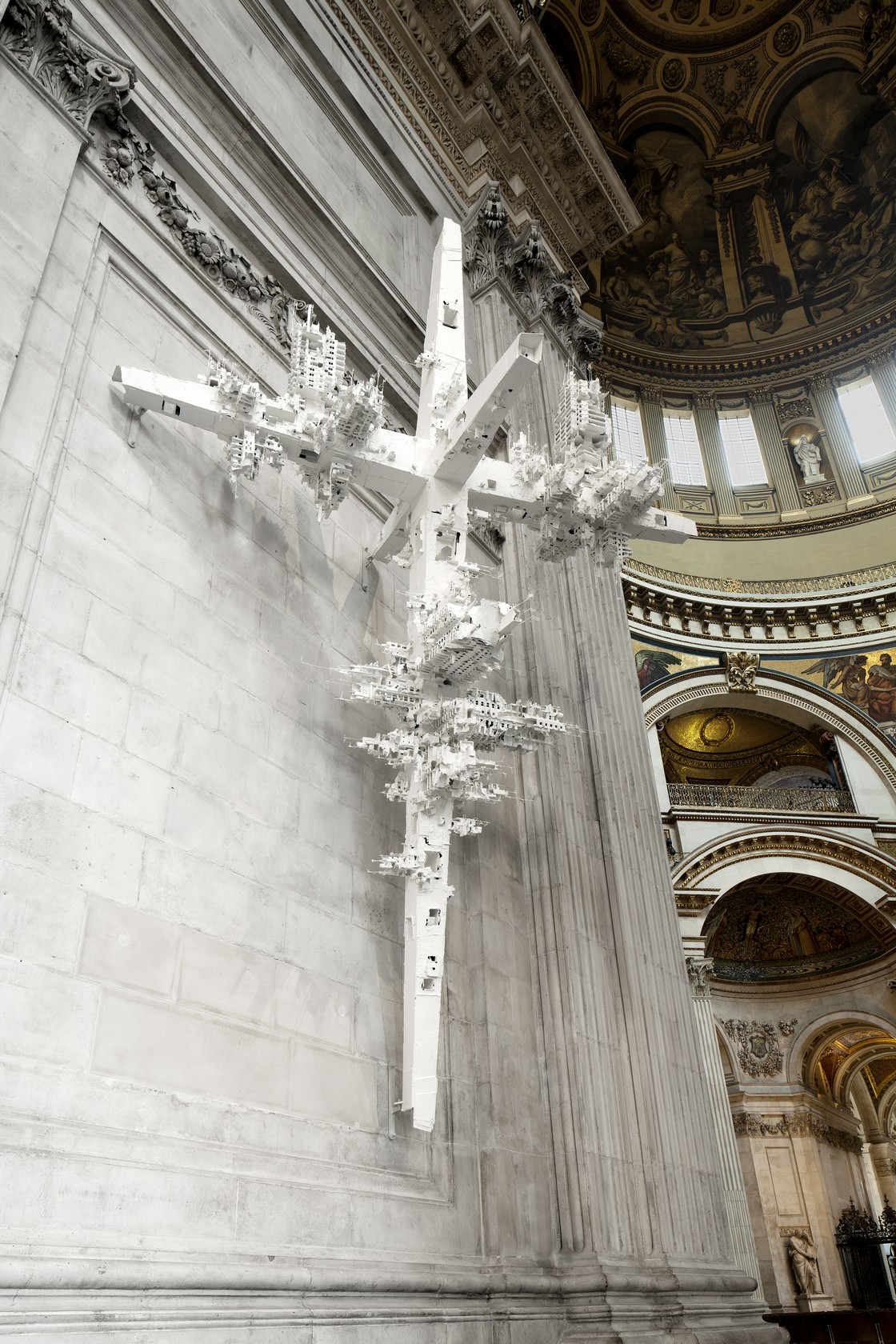Difference between revisions of "Great War Commemorative Sculptures"
From Londonhua WIKI
| (7 intermediate revisions by the same user not shown) | |||
| Line 5: | Line 5: | ||
|header1 = One of the Great War Commemorative Sculptures | |header1 = One of the Great War Commemorative Sculptures | ||
|bodystyle = width:25em | |bodystyle = width:25em | ||
| − | |image = [[File:sculpture.jpg|x450px|alt= | + | |image = [[File:sculpture.jpg|x450px|alt=sculpture]] |
| − | |caption = | + | |caption = [[Gerry Judah]] |
|label2 = '''''' | |label2 = '''''' | ||
| − | |data2 = Attributed to | + | |data2 = Attributed to Lauren Conroy |
|label3 = '''''' | |label3 = '''''' | ||
|data3 = c. 2014 | |data3 = c. 2014 | ||
| Line 16: | Line 16: | ||
|data5 = St Paul's Cathedral, London | |data5 = St Paul's Cathedral, London | ||
}} | }} | ||
| − | + | <br> | |
| − | |||
| − | |||
| − | |||
=Overview= | =Overview= | ||
| − | + | Text | |
<br><br> | <br><br> | ||
__TOC__ | __TOC__ | ||
<br> | <br> | ||
| − | =Background | + | =Background= |
| − | |||
| − | |||
| − | |||
| − | |||
<br> | <br> | ||
| − | + | Gerry Judah’s twin sculptures in the nave of St Paul’s Cathedral were created to commemorate the 100th anniversary of the beginning of the First World War. The sculptures are three dimensional cruciforms that are meant to portray the meticulously maintained war graves of northern France and further afield. Each sculpture is also embellished with miniaturised destroyed residential blocks depicting war zones in the Middle East – Syria, Baghdad, Afghanistan – thus connecting one hundred years of warfare. | |
| − | |||
| − | |||
<br><br> | <br><br> | ||
| − | + | ==Interpretations on the Work== | |
| − | + | Many people believe that Judah wants us to see how wasteful and how useless wars are to the world. His sculpture suggests the damaged, torn buildings represent the bodies and families that were ripped apart creating mass graves in residential areas. The sculpture suggests controversial themes such as life, death and God. | |
| − | == | ||
| − | |||
| − | |||
| − | |||
| − | |||
| − | |||
| − | |||
| − | |||
| − | |||
| − | |||
| − | |||
| − | The | ||
=References= | =References= | ||
| − | + | Arthitectural. (n.d.). Gerry Judah | Great War Commemorative Sculptures at St. Paul’s Cathedral. Retrieved May 09, 2017, from https://www.arthitectural.com/gerry-judah-great-war-commemorative-sculptures-at-st-pauls-cathedral/ | |
| − | |||
| − | |||
| − | |||
<br><br> | <br><br> | ||
| + | |||
=Image Gallery= | =Image Gallery= | ||
If appropriate, add an image gallery | If appropriate, add an image gallery | ||
<br><br> | <br><br> | ||
| − | + | [[Category:Art]] | |
| − | |||
| − | |||
| − | [[Category:Art]] | ||
| − | |||
| − | |||
| − | |||
| − | |||
| − | |||
| − | |||
| − | |||
| − | |||
| − | |||
| − | |||
| − | |||
| − | |||
| − | |||
Latest revision as of 23:19, 9 May 2017
Great War Commemorative Sculptures
Overview
Text
Contents
Background
Gerry Judah’s twin sculptures in the nave of St Paul’s Cathedral were created to commemorate the 100th anniversary of the beginning of the First World War. The sculptures are three dimensional cruciforms that are meant to portray the meticulously maintained war graves of northern France and further afield. Each sculpture is also embellished with miniaturised destroyed residential blocks depicting war zones in the Middle East – Syria, Baghdad, Afghanistan – thus connecting one hundred years of warfare.
Interpretations on the Work
Many people believe that Judah wants us to see how wasteful and how useless wars are to the world. His sculpture suggests the damaged, torn buildings represent the bodies and families that were ripped apart creating mass graves in residential areas. The sculpture suggests controversial themes such as life, death and God.
References
Arthitectural. (n.d.). Gerry Judah | Great War Commemorative Sculptures at St. Paul’s Cathedral. Retrieved May 09, 2017, from https://www.arthitectural.com/gerry-judah-great-war-commemorative-sculptures-at-st-pauls-cathedral/
Image Gallery
If appropriate, add an image gallery
